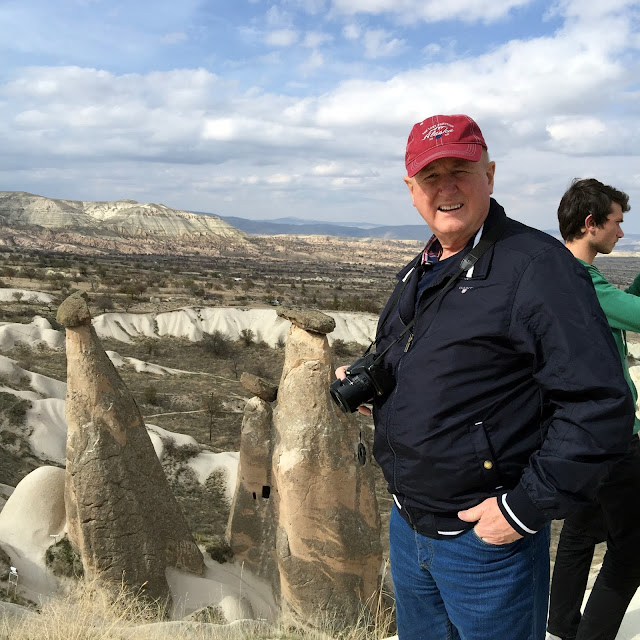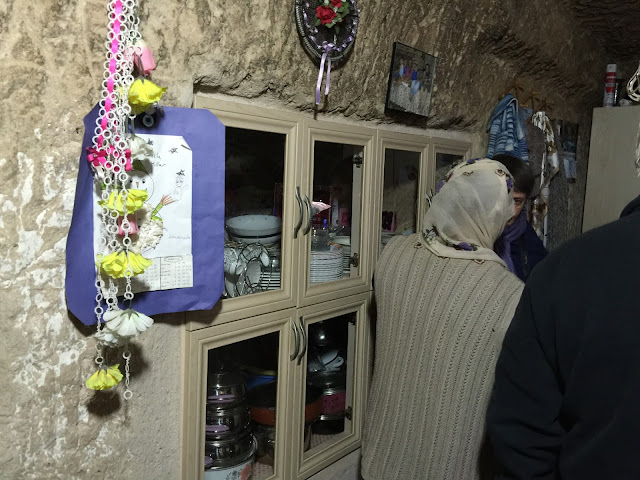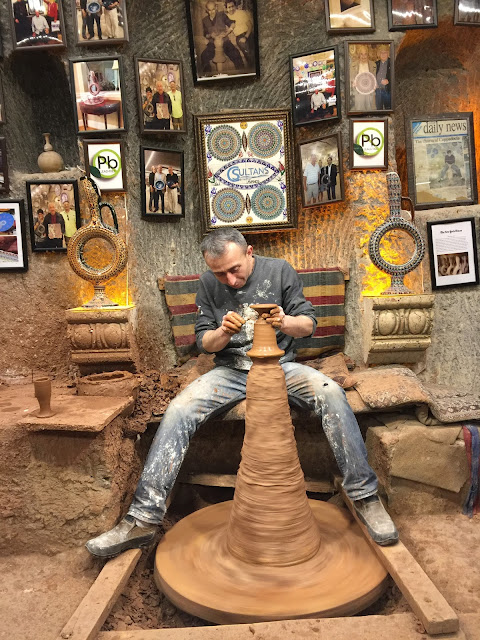Cappadocia
For our next segment of the trip, we caught an early flight to Kayseri (ancient Caesarea) and then traveled by bus to see the area. Cappadocia is a historical region of exceptional natural wonders which are the result of the eruption of ancient volcanoes. The apostle Paul came here on his first mission. We drove through the Goreme National Park to see some of the interesting landscapes and rock formations.
Some of our group went hot air ballooning while the rest of the group toured the area. On tour we could see the hot air balloons on the skyline.
A little village with homes built into the rocks.
Views of lava rock formations
We visited one of the lava rock homes in the Uchisar area.
This photo shows the husband and wife ( our host and hostess) that owned this stone house. It has been in the wife's family for 4 generations. You can see the TV on the left of the picture. The floor was covered with handmade Turkish rugs and there were also rugs decorating the walls of the home. The photo below shows a rug that the hostess was weaving.
These photos show the kitchen with cupboards, a refrigerator(complete with magnets on the door) a sink and utensils hanging on the wall.
performed by members of the Mevlevi sect of Muslims. They believe that through their whirling dance they can achieve religious ecstasy and get nearer to Allah.
It was interesting to watch their focus and ability to spin for such a long time without getting dizzy or sick. However, after the first 15 minutes of watching them, it was enough but their program lasted 45 minutes. For them, it was a "spiritual journey", for us it was kind of monotonous. Hal may have taken his own journey into the land of slumber during this program.
Our second day in Cappadocia we woke up to snow!

Our first stop was at one of the ancient underground cities in Kaymakli. These cities were originally carved out of the volcanic rock by the Hittites and included living quarters, granaries sitting areas and wine cellars.

During the Roman persecution of Christians in the 2nd and 3rd century AD, the need to hide was great and these underground cities were expanded and used. Again in 8th - 10th centuries when Arab raiders roamed, these underground homes were used once again. Apparently, thousands of people could live in these rock rooms for months at a time.



After exploring this city, we visited a Turkish rug factory and show room.
Our next stop was the outdoor museum area of Goreme.
We explored the Zelve Monastery complex which was an important settlement and religious area during the 9th - 13 centuries AD. The Christians moved to Zelve during the Persian and Arab invasions.
Cappadocia's first seminaries to train priests were located here. The remains of Christian themed murals decorate the inside and outside walls of these ancient stone monasteries
Our last stop for the day was a pottery factory and shop in Avanos. It was fascinating to watch a master potter quickly turn an intricate wine cruet
We also watched skilled painters add their touch with Turkish designs.
























It is so interesting to read and see pics of a part of the world I know nothing about. Those rock formations are amazing.
ReplyDeleteI agree with Joan- this is all so new to me. It kind of gives me the willies to think of living in those rock houses, but it sure is interesting. Did you get a blue eye? I'm glad you found blue and white pottery. I love to whirl- now I know why.
ReplyDelete